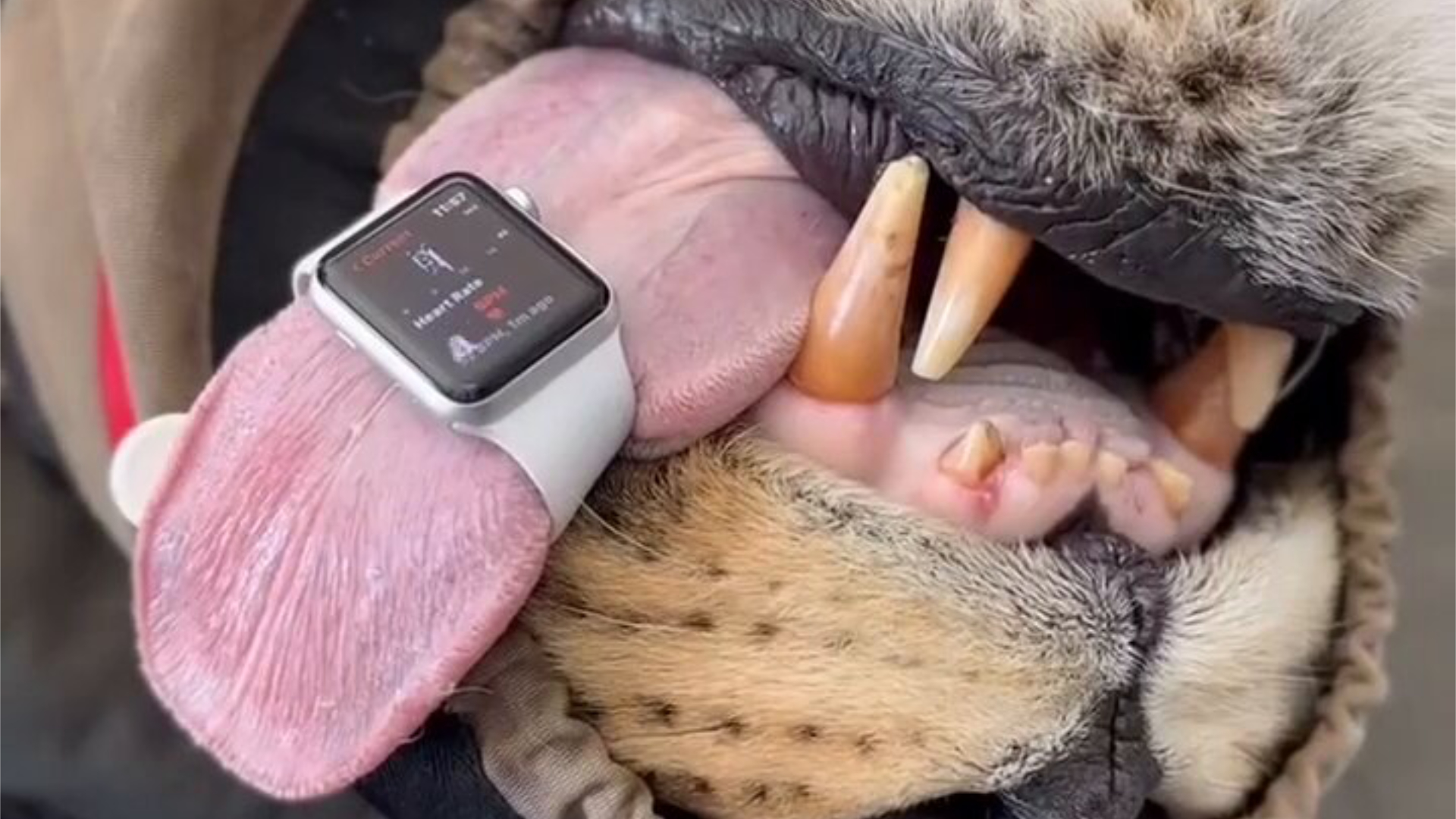
The Apple Watch is the most popular watch, hands down. And it's one of the most popular fitness watches. And for good reason! On the best Apple Watches, one of the most useful features is the heart rate tracker. But it turns out, the heart rate tracker isn't just for humans. Yep, you read that right.
In a recently shared video, a wildlife vet and conservationist demonstrated an offbeat, but ingenious use of Apple's popular gadget. It showed an Apple Watch wrapped around a lion's tongue, tracking the animal's heart rate.
The conservationist’s caption summed it up perfectly: the unexpected prowess of the Apple Watch in measuring a lion's heart rate is as impressive as the lion's thundering snore. In a delightful blend of sarcasm and genuine excitement, the caption reads: “I don’t know what’s more impressive… the snore, or the discovery that the @apple Watch can measure a lions heart rate if you strap it to the tongue (even if it is one of the less conventional ‘off-label’ uses for the device 😉). Either way, it’s a true ‘technology meets conservation’ story 😍”
But... why?
Actually, the video and accompanying message highlight a crucial challenge in wildlife conservation – monitoring the vitals of large animals during anaesthesia. Traditional hospital bells and whistles simply don’t cut it in the wild. Furthermore, most monitoring devices cater to smaller animals, making it a struggle to get accurate readings from the bigger, toothier, or scaled patients.
And there's more. It turns out the Apple Watch isn’t just a one-trick pony in the animal kingdom. The same technique works on elephants when the watch is taped to their ears, creating a sight as amusing as it is effective. The conservationist praised the watch as the ultimate “work smarter, not harder” tool in their fieldwork.
Beyond the quirky use of the Apple Watch, the conservationist lauded the broader strides technology has made in conservation. From real-time GPS tracking collars for endangered species to innovative “horn pods” for rhinos, and even a Poaching Test developed by scientists at Taronga Zoo, the integration of tech in conservation efforts is nothing short of remarkable. Drones, thermal cameras, and AI are becoming powerful allies in the fight against poaching, with FLIR thermal cameras distinguishing between animals and humans from over a mile away, and AI detecting potential poachers by observing animal reactions.
In a world where technological advances often seem focused on consumer convenience, it’s refreshing and heartening to see these innovations being harnessed for the greater good. Now, if only we could get Siri to understand dog barks...







